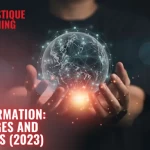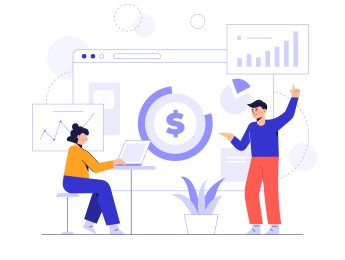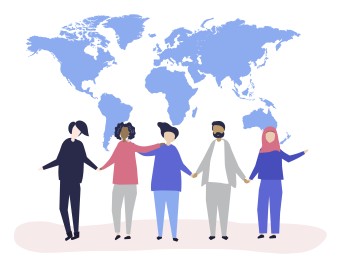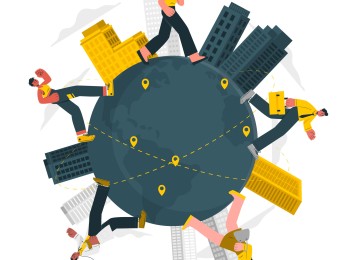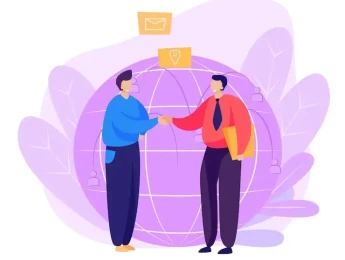As the modern world develops, organisations have become increasingly required to follow suit with their technological processes. Digital transformation has proven to improve productivity in various ways across many different sectors. Digitally transforming government relations and public affairs functions will enable the organisation to continue to meet the needs of its clients and fulfil its services.
Digital transformation can involve a range of organisation functions. Most government relations organisations rely on the process, analysis, and storage of confidential data to carry out their roles. Transforming a digital system can drastically improve the rate of analysis and processing, improving an organisation’s overall efficiency. Automating these processes will also remove the possibility of human error and better guarantee that all data is accurate and ready to be used.
To successfully implement digital transformation, those involved need to be competent in the stages of creating, designing, and monitoring digital performance. There needs to be a great understanding of the role of technology in a specific function and how it will improve productivity. Detailed action plans must be created, detailing innovative ideas, goals, objectives, and what steps will be taken to achieve a desirable result.
Upon completion of this course, participants will be able to:
- Understand the importance of digital transformation for government relations.
- Assess how digital transformation of government relations can increase value to the wider organisation.
- Explain how digital transformation can benefit public affairs and government relations.
- Identify the different roles contributing to designing, implementing, and managing digitalisation programmes.
- Utilise data, analytics, and visualisation for improving government relations.
- Compare current performances with past performance to evaluate improvement and predict future improvements.
- Create effective action plans detailing digitalisation goals, objectives, and ideal outcomes.
This course is designed for anyone in government relations or public affairs who wishes to improve organisational functions with digital transformation. It would be most beneficial for:
- Senior Executives
- Government Relations and Public Affairs Officers
- Data Analysts
- Operations Managers
- Executive Directors
- Ministerial Committee Personnel
- Government Relations Managers
This course uses a variety of adult learning styles to aid full understanding and comprehension. Participants will review case studies of organisations that have undergone successful digital transformations to highlight key areas that led to success and features that could be further improved.
To develop all knowledge and skills related to the taught content, participants will partake in various learning activities, including seminars, group discussions, demonstrations, and group activities. These will grant the participants ample opportunities to truly comprehend the content, and work with one another to offer and receive constructive feedback.
Day 5 of each course is reserved for a Q&A session, which may occur off-site. For 10-day courses, this also applies to day 10
Section 1: Introduction to Digitalisation Frameworks
- Understanding the necessity of frameworks for digitalisation.
- Typical framework used for public affairs and government relations.
- The advantages and disadvantages of digitally transforming government relations.
- Assessing what types of digital transformation would be most beneficial for a particular function.
- How to effectively plan and design digital systems for implementation.
Section 2: Data Management
- Managing open-source data in a government setting.
- The development of digital portals and platforms to record, manage and sort important and confidential data.
- Methods of data analysis – descriptive, exploratory, diagnostic, and predictive.
- Examining the functions and architecture of digital information.
- Presenting data in a coherent way for government relations and public affairs purposes.
Section 3: Digital Technologies
- Identifying the various types of technologies that can be used for digital transformation.
- The role of artificial intelligence and machine learning.
- Utilising the cloud to share and manage data.
- Recognising patterns within digital technology and predicting future trends.
- Analysing and processing data with artificial intelligence and machine learning systems.
Section 4: Implementing Digital Systems
- Establish what steps must be taken for successful implementation – planning, designing, and monitoring progress.
- Gathering a team of skilled individuals experienced in digital systems.
- Evaluating the risks associated with digital transformation and establishing risk preventatives.
- Various methods of writing action plans, innovation, and monitoring performance.
Section 5: The Future of Digital Systems
- How technology will shift the focus within government relations organisations.
- Examining the vast uses of technology within this sector.
- Preparing for future innovative technologies and creating space within the organisation for them.
- Creating a workplace culture that is open to change and accepting technological advancements.
Upon successful completion of this training course, delegates will be awarded a Holistique Training Certificate of Completion. For those who attend and complete the online training course, a Holistique Training e-Certificate will be provided.
Holistique Training Certificates are accredited by the British Assessment Council (BAC) and The CPD Certification Service (CPD), and are certified under ISO 9001, ISO 21001, and ISO 29993 standards.
CPD credits for this course are granted by our Certificates and will be reflected on the Holistique Training Certificate of Completion. In accordance with the standards of The CPD Certification Service, one CPD credit is awarded per hour of course attendance. A maximum of 50 CPD credits can be claimed for any single course we currently offer.
- Course Code IND17-106
- Course Format Classroom, Online,
- Duration 5 days


